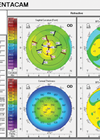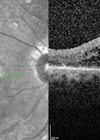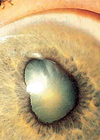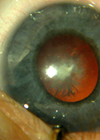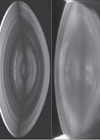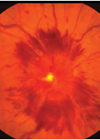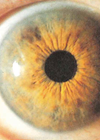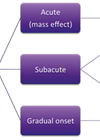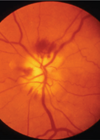Ophthalmology archive for 2016
Surgical options for the treatment of hyperopia
The modern refractive surgeon has a variety of options available to treat patients with hyperopia who wish to be independent of spectacles and contact lenses. Unlike in low myopia where presbyopic patients may have the ability to see well for...
Specialty-driven EMR for paperless clinical environment – insights for an informed choice
Deployment of specialty-driven (or specialty-specific) electronic medical record (EMR) systems across UK ophthalmology units appears to be growing rapidly at the expense of generic, multiuse digital technology packages. Experience further suggests that open source systems can play a significant role...
Management of diabetic macular oedema in vitrectomised eyes
Diabetic macular oedema (DMO) is one of the leading causes of blindness; its prevalence is on the rise with progressive increase in numbers of people suffering from diabetes. The management of DMO has evolved significantly over the past few years....
Principles of management
Whatever section of pathology is to blame and wherever it strikes, the aim of treatment is always the same. Find the cause if you can. Establish the effects of the cause. Halt the pathological process if you can. Reverse its...
A revolution in modern genetic testing for the clinical management of ocular disease
Recent years have seen a huge increase in our understanding of the genetic factors underlying a wide variety of eye diseases. This has included common conditions such as glaucoma and age-related macular degeneration, as well as those conditions which have...
The refractive index in the eye lens – implications for clinical practice and optical design
The eye may appear to be a comparatively simple organ and yet its optical system is complex and continues to be a source of investigation and research. The major optical elements are considered to be the cornea and the lens...
Surgical treatment of high myopia
Although several excellent modalities are available for correcting high myopia, the surgical treatment of this condition remains one of the biggest challenges for refractive surgeons; this group of patients is often very dependent on contact lenses. If these patients become...
EU: is it time to leave and embrace the world?
Should the United Kingdom remain a member of the European Union (EU) or leave? It’s a big decision involving some complex issues, and there’s no doubt the EU will continue to change. Ipsos MORI’s monthly EU voting intention poll published...
Papilloedema: an update
Some readers may have seen a recent report in the national newspapers of the case of a teenage girl with persistent severe headache associated with a fatal brain tumour having been undiagnosed despite many consultations with her medical advisers. It...
The eye without tears
The Art is long and Life is short. So goes the dispiriting tag in Latin and flung from day one and at regular intervals thereafter at idle medical students who, inevitably brainwashed, come by graduation to believe that the only...
Cutting-edge practice in glaucoma care: what, how and why?
More effective treatments and drug delivery modalities, implantable minimally invasive glaucoma surgical (MIGS) devices, as well as accelerating clinical research programmes, will transform the surgical and clinical management of glaucoma in the near future. There is also an ever-greater emphasis...
Neuro-ophthalmic disease patterns in Southeast Asia with particular reference to giant cell arteritis
As indicated in an earlier article in Eye News [1] Dr Cullen was invited in 2000 to the Singapore National Eye Centre (SNEC) as visiting Professor with a specific remit to set up a specialist neuro-ophthalmology service, which was the...


